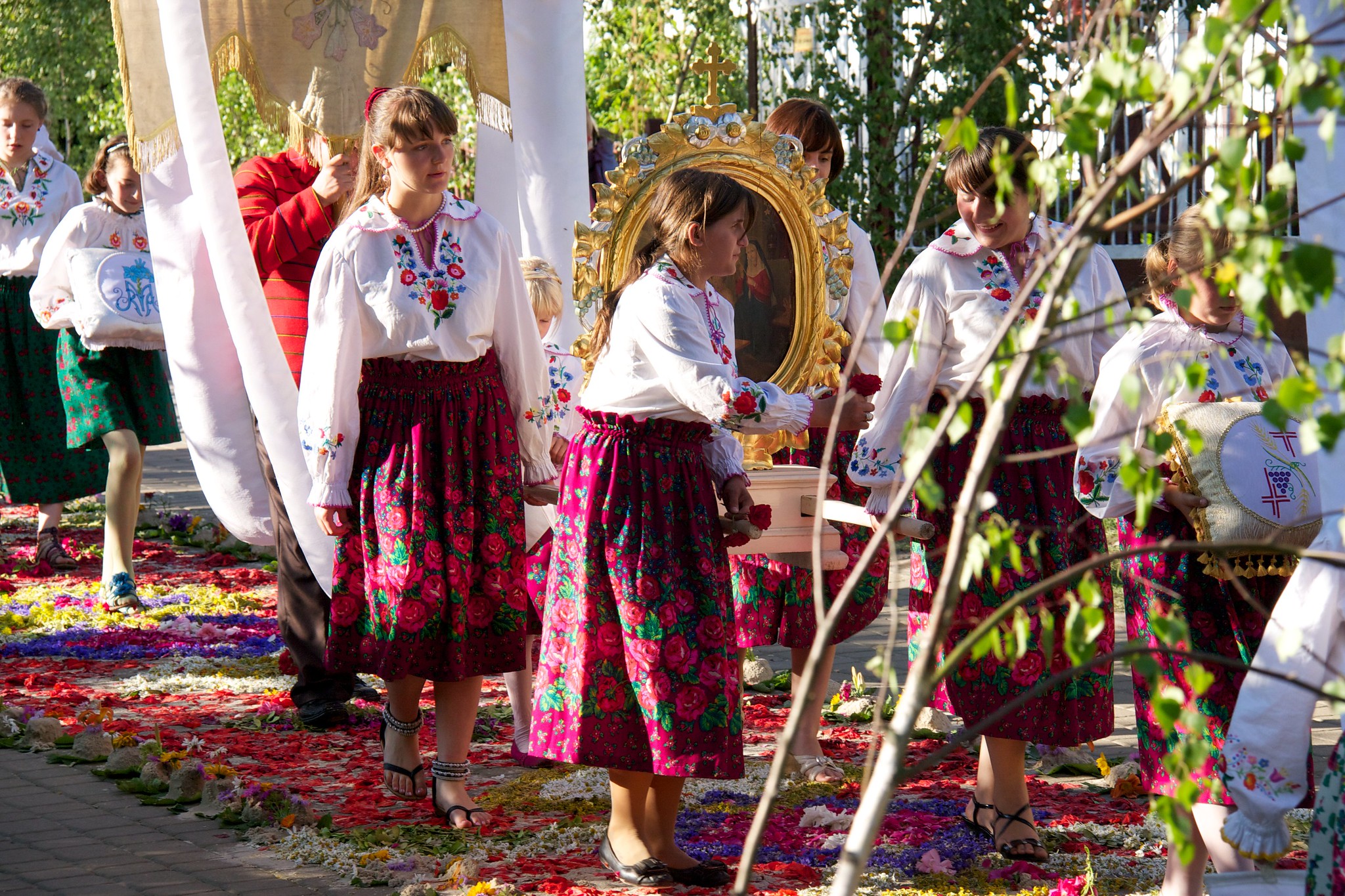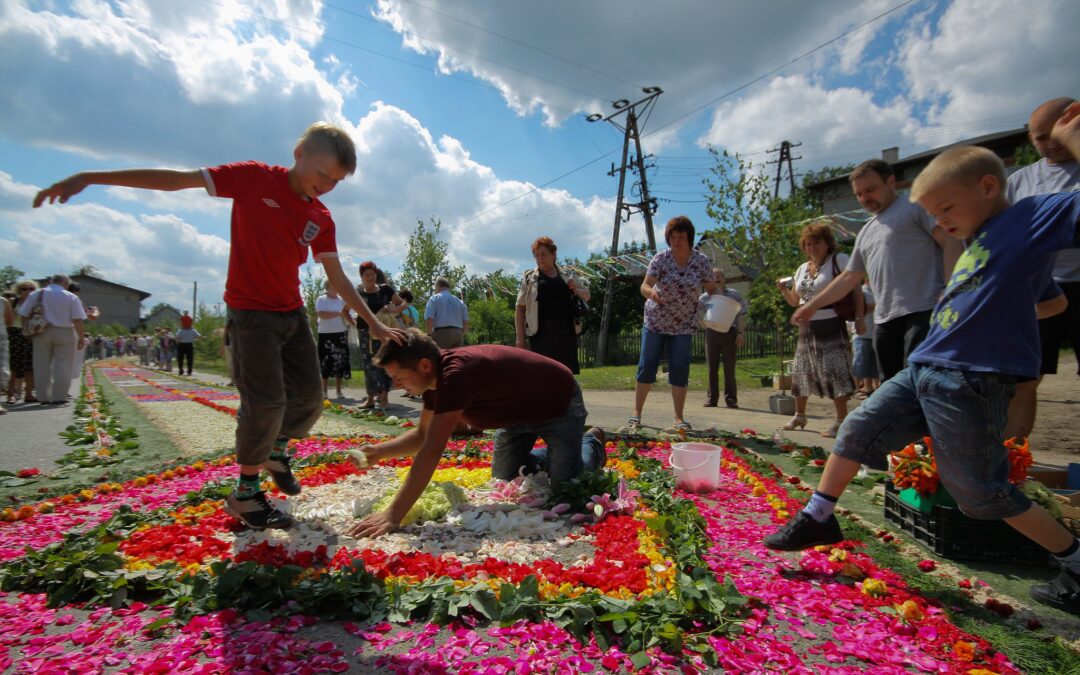A tradition in parts of Poland of arranging flower carpets for the annual Corpus Christi procession has been included by UNESCO on its list of the Intangible Cultural Heritage of Humanity. It is only the third Polish custom to make the list.
The village of Spycimierz, near Łódź, is particularly famous for its annual event. The tradition is also cultivated in villages in the southwestern Opolskie region, including Klucz, Olszowa, Zalesie Śląskie and Zimna Wódka.
The custom dates back 200 years, when people started arranging flowers along the route of an outdoor procession for the Corpus Christi celebration.

A procession in Spycimierz (Paweł Wita/Flickr, under CC BY-NC-SA 2.0)
Families are each responsible for arranging a section of the carpet, usually on the section of road in front of their homes, notes UNESCO. Flowers are collected days in advance to be arranged early on the morning of Corpus Christi, ahead of a mass and “joyful” procession that walks over a meticulous collective design.
Roses, red poppies and cornflowers are common, but a wider array of flowers from surrounding fields and family gardens can feature. Soil, sand, tree bark and freshly cut grass or calamus leaves are also used.
“The practice has been passed on for generations, especially within families,” writes UNESCO. The organisation also notes that pattern-making workshops are often held in schools, with the assistance of local parishes and NGOs.
It “unites the entire community and has shaped local identity”. The collective carpet is meant to express “religiosity, creativity and an appreciation of the beauty of nature”.
According to Poland’s culture ministry, the tradition harks back to the medieval custom of royal gardens donating flowers to the church to decorate cathedrals.
In Poland, during an annual church holiday that is today celebrated on Corpus Christi, girls (called “bielanki”) would traditionally walk ahead and throw fresh or dried flowers in front of the procession. Flower carpets would also be arranged on church floors, as well as outside the building and along the path of the procession.
UNESCO has previously recognised two other pieces of Polish intangible heritage: the 19th-century tradition in Kraków of making models of nativity scenes (known in Polish as szopki krakowskie) and the Polish-Belarusian tree beekeeping culture, which was added to the list last year.
During this week’s session, UNESCO has also added Poland, along with five other new countries, to a longer list of states recognised for their heritage of falconry.
UNESCO has included 16 places in Poland on its list of World Heritage Sites. The first to be recognised, in 1978, were Kraków’s historic city centre and the nearby Wieliczka salt mine, which dates back to the 13th century.
They were joined the following year by the former German Nazi concentration and extermination camp of Auschwitz and by Białowieża Forest, which straddles the border with Belarus and is one of the last remnants of the primeval forests that once covered much of Europe.
The remaining Polish sites on the UNESCO World Heritage list are: the historic centres of Warsaw, Toruń and Zamość; Malbork Castle; the Churches of Peace in Jawor and Świdnica; the wooden churches of southern Lesser Poland and Carpathia; Kalwaria Zebrzydowska and Muskau/Mużakowski parks; Centennial Hall in Wrocław; and, the two most recent additions, historic mines in Tarnowskie Góry and near Ostrowiec.
Main image credit: Mariusz Cieszewski/Ministry of Foreign Affairs of Poland (under CC BY-NC 2.0)

Maria Wilczek is deputy editor of Notes from Poland. She is a regular writer for The Times, The Economist and Al Jazeera English, and has also featured in Foreign Policy, Politico Europe, The Spectator and Gazeta Wyborcza.




















